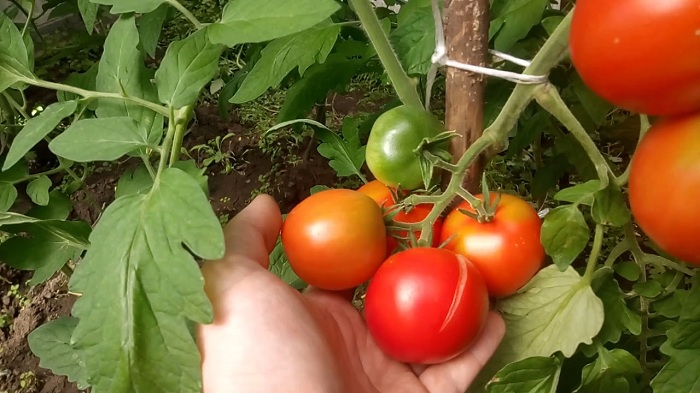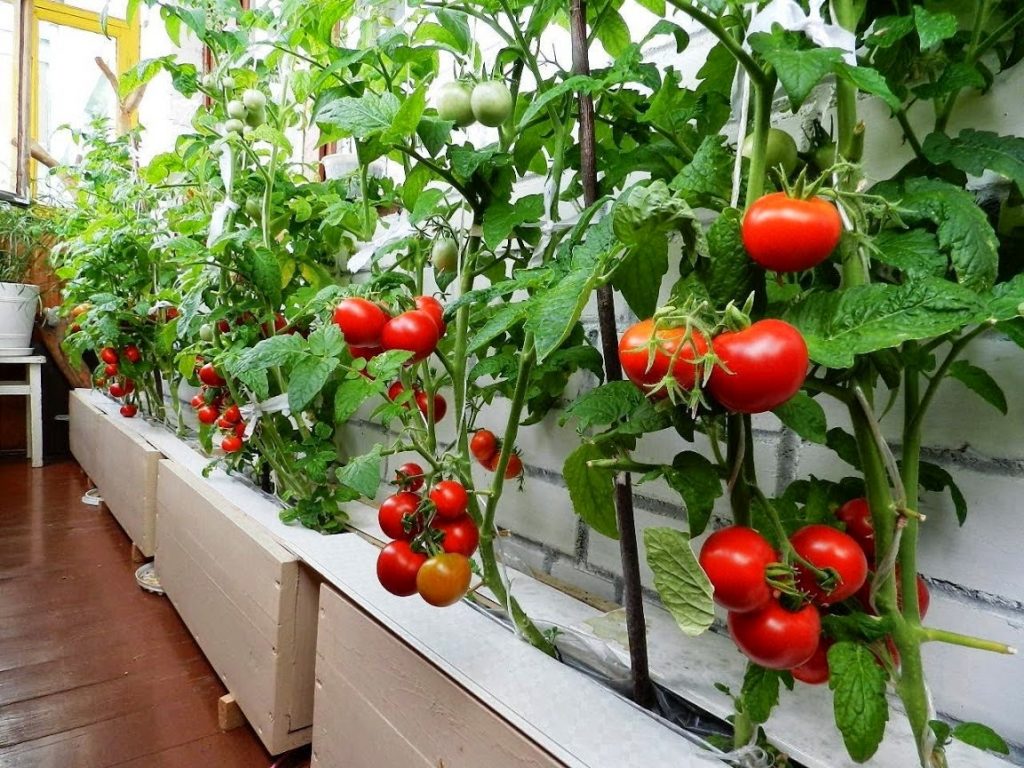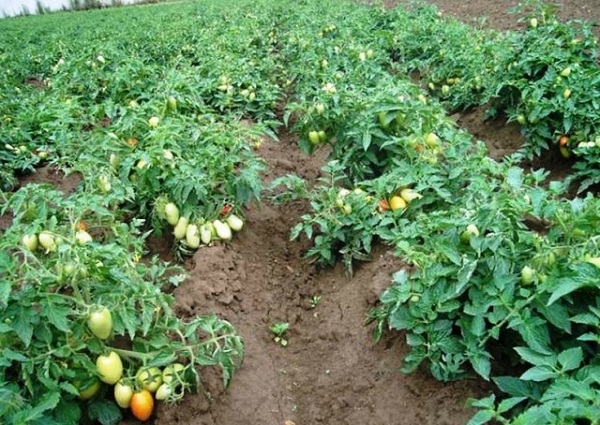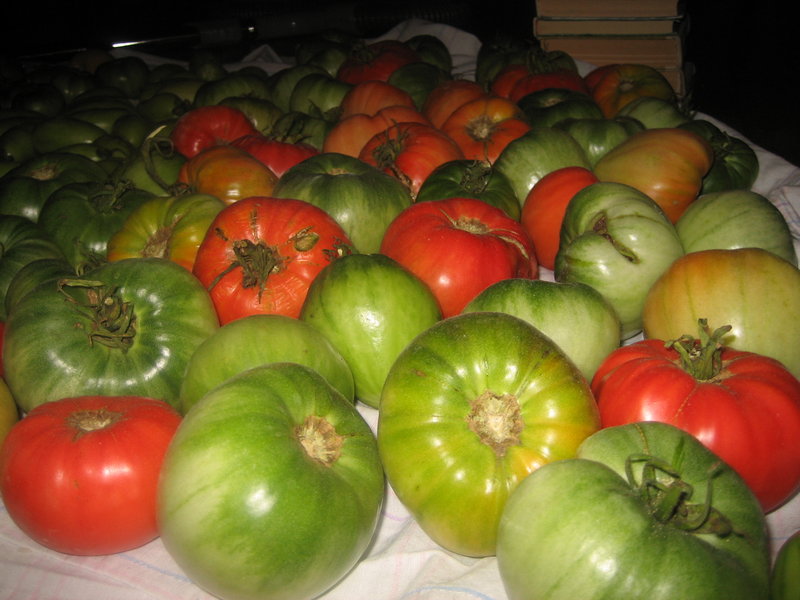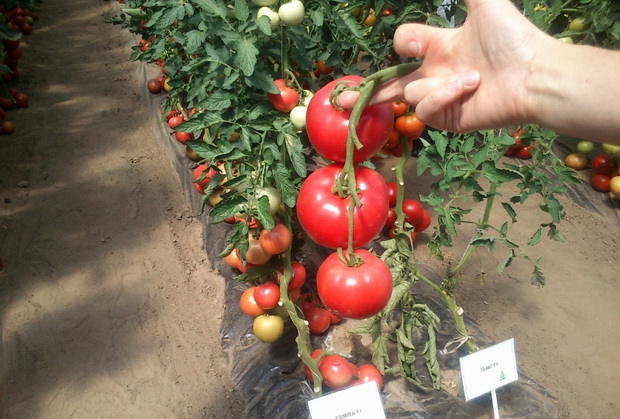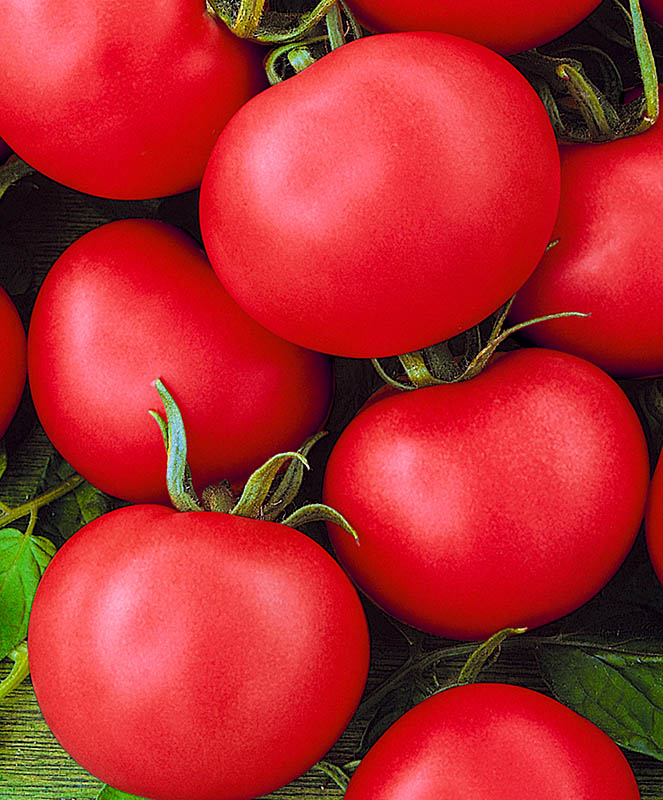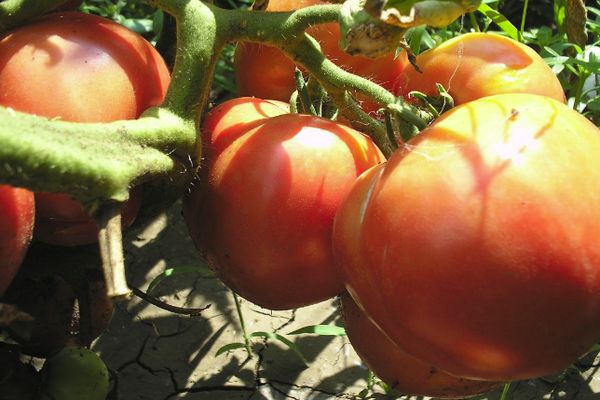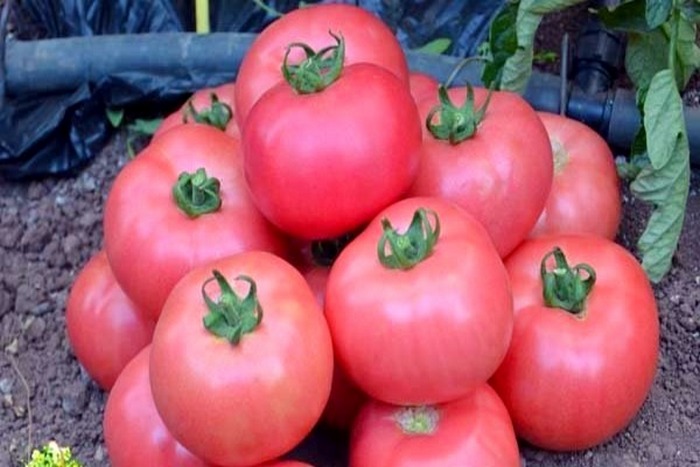Content:
Leopold tomatoes are an early ripening hybrid that has been listed in the State Register as "Leopold f1" for 20 years. An early ripening variety, well suited both for home use and for commercial purposes, was created by breeders of the "Gavrish" company in 1998.
All about the Leopold tomato variety
The Leopold determinant hybrid is excellent for greenhouse and open field cultivation under film cover. Perfect for the southern and northern regions of Russia.
Tomato Leopold characteristics and description of the variety:
- Early maturing view. Ripening period from germination to fruit - 90-95 days;
- Yields round, firm, juicy, red fruits, weighing 100 grams, with a sweet taste;
- Resistant to pathogens of diseases such as tobacco mosaic, cladospariosis, fusarium and temperature changes;
- Can form two stems (but yields better in one stem);
- High yield (4 kg per bush).
The shrub grows up to 90 cm in height outdoors and 100-120 cm in greenhouse conditions. The foliage is of a standard form for this culture, has a dark green color and a small edge. Medium branching plant with a strong root system and a sturdy stem.
Fruits are round, fleshy, with a firm skin, are well stored and are not damaged during transportation. The fruit has 3-4 seed chambers, hollow ones are absent.
Agricultural technology of cultivation
It is best to grow the culture by seedling. Correctly grown seedlings are the key to a strong bush and a good harvest. Seeds for her are pre-soaked in salt water or a solution of potassium permanganate and dried on a paper towel or napkin. You can also plant non-dried material, then this should be done in the early morning. Wet seeds are placed in pots with peat or containers with nutrient soil (purchased soil or soil from the garden, fertilized and disinfected), 1-1.5 cm deep (no deeper!) And covered with foil or glass. Be sure to place the cups with the planting material in a warm and bright place.
After sowing, seedlings will appear in 5-7 days, depending on what kind of soil and temperature in the room.
As soon as the plants have risen from the ground, they need to be provided with sufficient sunlight and daylight and a favorable temperature (19-25 ° C). In the evening and at night, the seedlings should be illuminated with lamps.
Planting seeds for home germination is carried out in mid-late March, and the bushes are transferred to the garden in late May-early June (depending on weather conditions during the day and the absence of night frosts).
After 2-3 leaves have appeared on the shoot, it is dived (transplanted into another container), if all plants grow in one container.
During the growth of seedlings, it needs to be fed with a non-concentrated fertilizer solution for the growth of Solanaceous crops.
Before moving young tomatoes into open ground, they need to be hardened (lower the air temperature to 16 ° C by opening the vents), and a couple of days before transplanting, take the plants outside and even leave them there overnight (the main thing is not to cold snaps at night).
A culture is planted according to a 40 by 50 cm scheme so that there is good access to the fruits, and the branches do not damage each other.
Already transplanted Leopold tomato bushes need to be fed and given the necessary care. Feed with mineral organic fertilizers (but do not use fresh manure or bird droppings, as they are sources of infections that destroy the roots). It is better to use fermented humus for feeding.
In the first half of the growing season, it is worth feeding with nitrogen-containing preparations, for the growth of foliage and the development of the root system.
After the first ovaries have appeared, fertilization is needed with potassium and phosphorus in order to improve the ripening of the crop.
This species prefers neutral soils or with low acidity, with a large amount of magnesium and with a low humus content. It is better to fertilize the soil and observe that it is not acidic and low-lying, otherwise the culture will die.
With regard to watering, the water should be warm, settled, you need to water at sunset, under the root, without soaking the leaves. Watering is adjusted up to 1-2 times a week, after the bushes get stronger and take root in the soil. During flowering, hilling and feeding, the culture needs mandatory moisture.
Hilling is carried out 1.5 weeks after planting in the ground, in order to form additional root branches. The procedure is repeated every 15 days.
The plant needs to be pinned so that the nutrients are distributed more to the fruits than to the foliage. It is necessary to carry out the procedure in the first half of the day in sunny weather, so that the place of the torn off shoot dries up sooner. The removal of stepchildren is carried out throughout the tomato growing season in the greenhouse.
Like any variety, Leopold tomato requires a garter and props. But it is not worthwhile to impose on the top and pull the twine, so that the tip of the bush does not come off, since there it is thinner.
The stem requires shaping so that fruiting is more friendly and easy to access.
It is worth protecting the culture from pests with the help of special preparations or folk methods. The most common tomato pests are whitefly, Colorado potato beetle, aphids and caterpillars. To combat them, such means as "Proteus", "Phosbecid" and other insecticides are well suited.
From folk remedies, infusions of wormwood, celandine, sunflower, white acacia are good for sprinkling foliage.
In bad weather conditions, if the culture grows in the fresh air and does not have time to ripen, you can pick the green fruits and put them on a windowsill or in boxes in a lighted place, this hybrid ripens perfectly well.
Advantages and disadvantages
On the package with seeds, the description of Leopold tomatoes absolutely coincides with the result obtained after planting.
This is an early ripening variety, well appreciated in the Moscow markets, by experienced and novice gardeners. Its peculiarity is in a quick yield of the harvest, this is the main plus.
Other benefits of this hybrid:
- Amicable ripening of the crop (the fruits ripen at the same time);
- Good presentation;
- High palatability;
- Disease resistance;
- Suitable for growing on small and large farms.
There were no drawbacks of the variety. Numerous positive reviews of gardeners speak only of positive varietal properties.
According to the parameters, Leopold gives round, juicy fruits, 100 grams each. weight, which are perfect for use in salads, preserves, seaming, juices. In addition, an excellent presentation is valuable in commercial vegetable markets.
This type is also suitable for inexperienced gardeners who have decided to plant tomatoes for the first time. It does not differ in leaving from other varieties and gives a good and tasty harvest.
